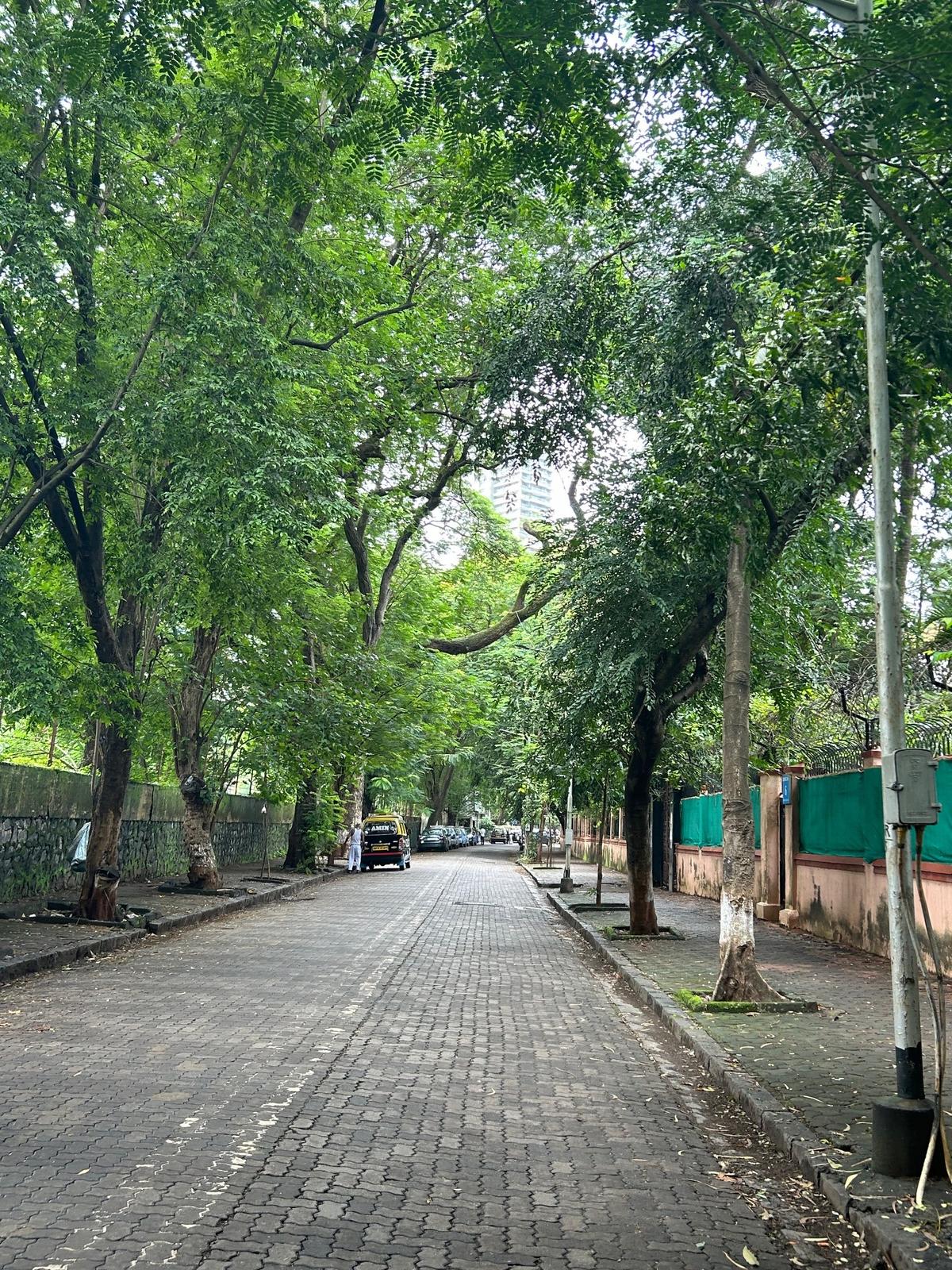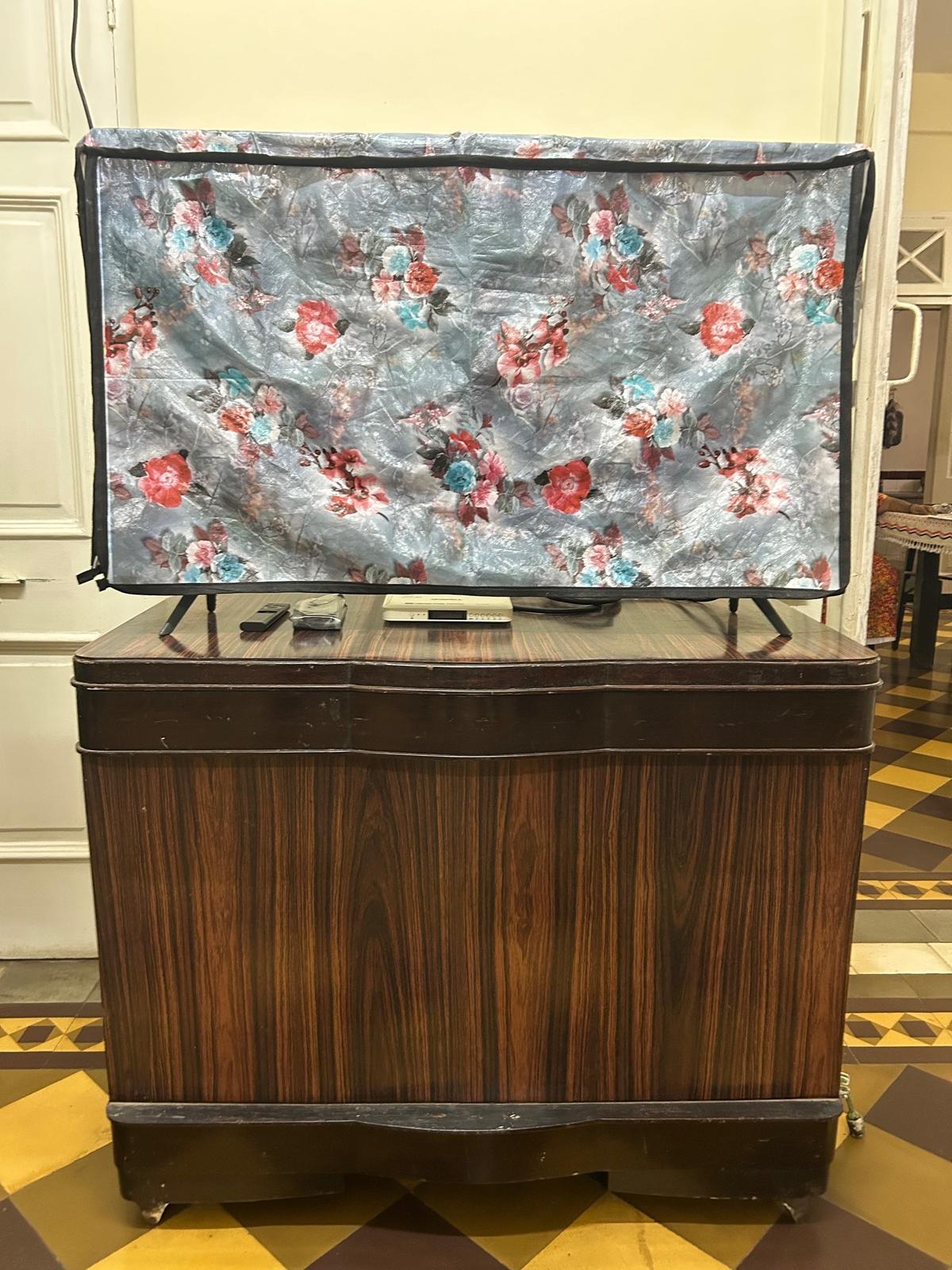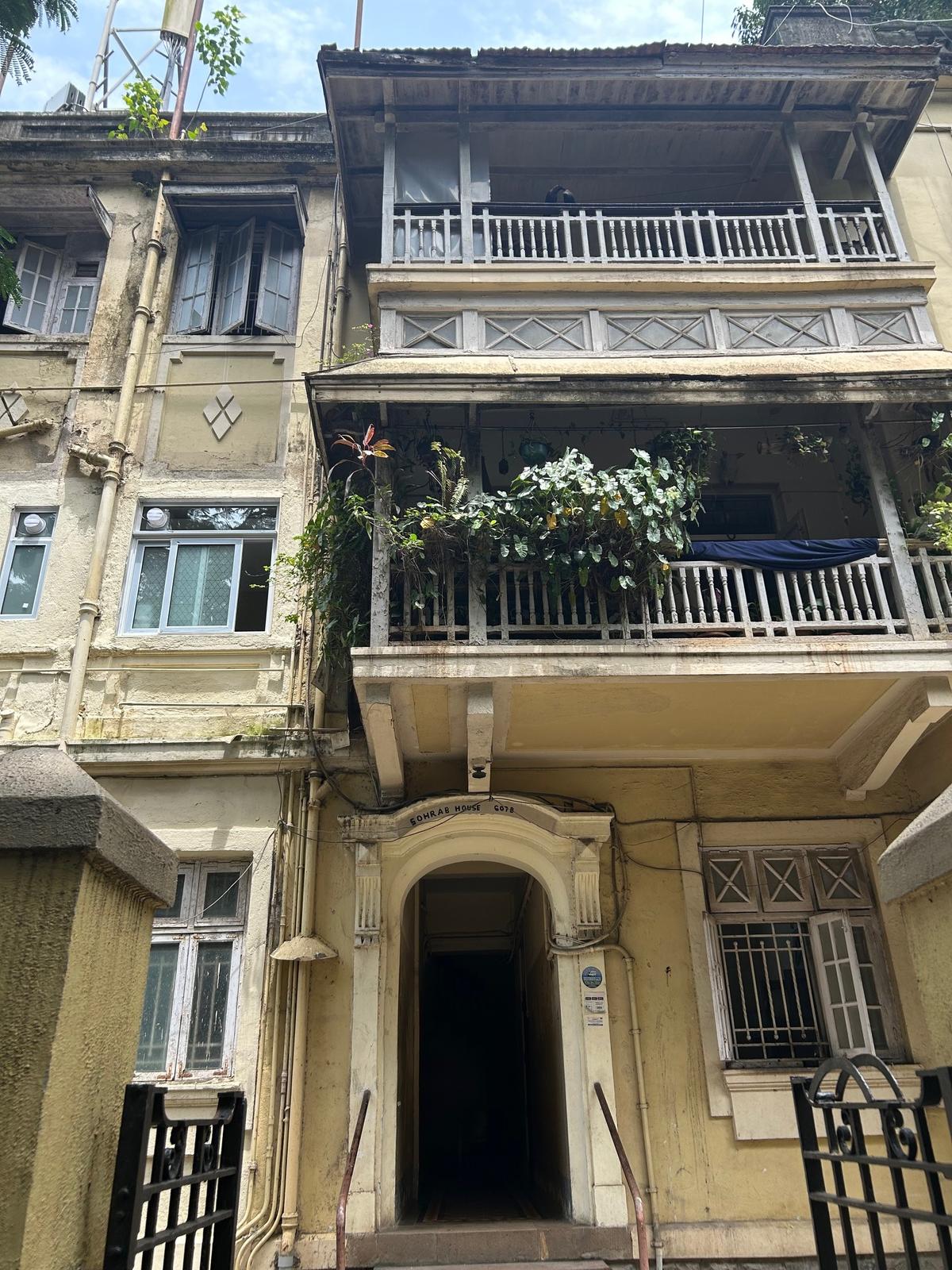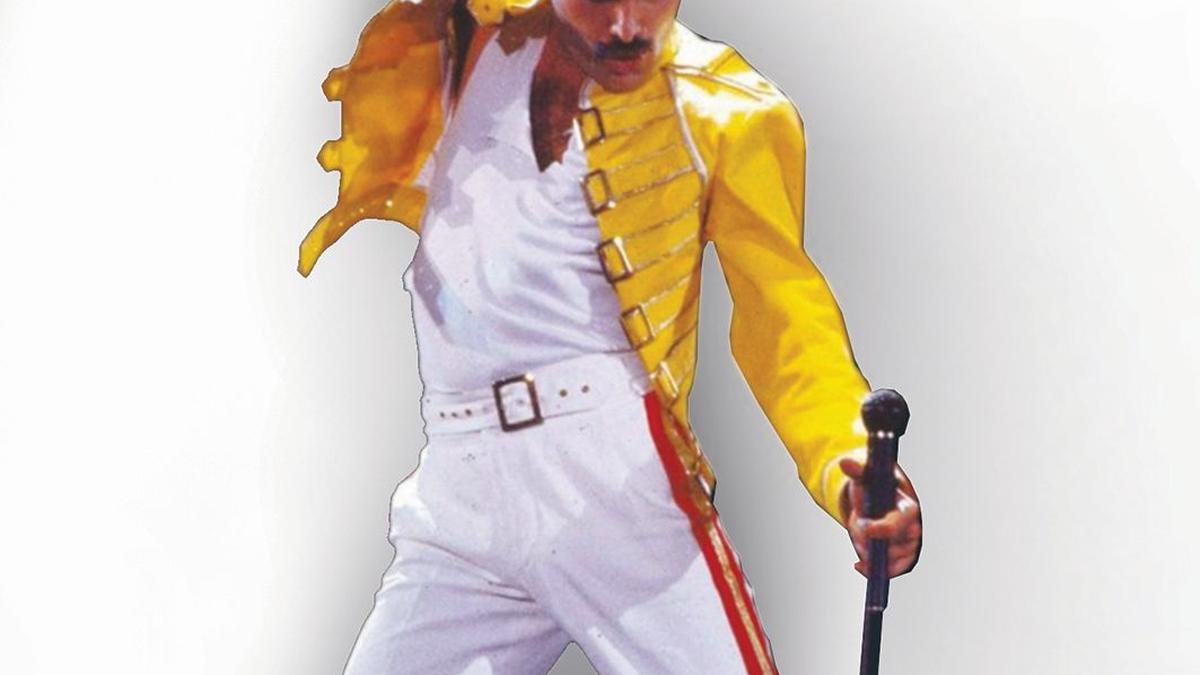Freddie Mercury in his iconic outfit – white pants with red stripes, a white T-shirt and bright yellow military jacket. Photo Courtesy: The Hindu Archives
It is a hot and humid October morning. But walking down the clean, wide tree-lined streets of Mumbai’s Dadar Parsi Colony, you hardly feel the heat. It is an oasis of calm and greenery in a bustling metropolis. The houses here, which are no more than three storeys high, have neo-classical and art deco architectural elements and the Faravahar (a bearded man on a winged disc) symbol at the entrance. They whisper stories of the past.

One of the streets of Dadar Parsi Colony. Photo Credit: Chitra Swaminathan
The largest Parsi enclave in the world, the colony was established following the bubonic plague in the mid-1890s. Civil engineer Mancherji Edulji Joshi persuaded the British to reserve this site, which was once low-lying marshy land, for the Parsis. His futuristic blueprint included not only a fire-house or fire temple (Rustam Farmana Aghiari), a school, a Madrasa (Madrasa) and a marriage hall, but also the species of trees to be planted on each street. In a rapidly changing city, the colony remains special as it quietly strives to preserve Parsi culture and tradition.
The Queen at the Morumbi Stadium in São Paulo in 1981. (From left) Brian May, Roger Taylor, John Deacon and Freddie Mercury. Photo Courtesy: The Hindu Archives
Dadar Parsi Colony is special for another reason, especially for rock fans around the world – Freddie Mercury, frontman of the hugely popular British band ‘Queen’ of the 1970s. A Parsi by birth, Freddy’s original name was Farrukh Bulsara and his roots are here. He was born in Zanzibar, East Africa, and was sent to India to study at a boarding school in Panchgani, Maharashtra. Although the family later moved to the UK, Freddie, his mother Jer and father Bomi remained in touch with the extended family.
“Whenever he came to Mumbai, he preferred to stay with us rather than a five-star hotel,” says Freddy’s second cousin Jahangir Bulsara, sitting next to a table on which Freddy’s photograph was kept. . “Look at that picture,” he says, pointing to a picture of the inside of a glass cabinet. “It’s very dear to me because it’s signed by Freddie. He gave it to me and it is my prized possession. Like many people around the world, I am a die-hard Queen fan. The combination of ballads, metal, pop, glam rock and blues became the group’s signature style. The most amazing thing about Freddie was that he constantly reinvented himself,” he says.

What was once a record player on which Freddy played music is now being used as a trunk. Photo Credit: Chitra Swaminathan
The rock icon, known for his brilliant stage presence (remember his military-style sunflower yellow jacket and silver sequined unitard), songwriting abilities and powerful vocal range, began his musical journey at Panchgani Boarding School. “I was told that Freddie’s parents sent him to St. Peter’s because he was so naughty. He used to come to stay with us during holidays. He discovered his love for music when he became a part of the school choir and later the school band. None of us ever thought that this shy boy would one day become an international star. But the family remained simple and humble,” says Jahangir.

The house where Freddy spent his childhood holidays. , Photo Credit: Chitra Swaminathan
As four-member Queen stormed the music charts with songs like ‘Bohemian Rhapsody’, ‘We Will Rock You’ and ‘We Are the Champions’ and performed to packed stadiums (Queen Live at Wembley Stadium was attended by 70,000 As more people joined), Freddy became one of the most influential and famous musicians.
Parsi Colony is one of the first planned settlements of Mumbai and reflects the collective dream of a community. Although it was exciting to visit the colony to explore Freddie’s connection to India, the musician never actually spoke openly about his ethnicity or discussed his Parsi heritage. They feared racial prejudice and did not want to be seen as immigrants in the Western music industry. Thus Farrukh became Freddy and took the nickname Mercury after his song ‘My Fairy King’.
Freddie once said: “I always knew I was a star. And now, the rest of the world seems to agree with me.”
published – October 09, 2024 04:36 PM IST
